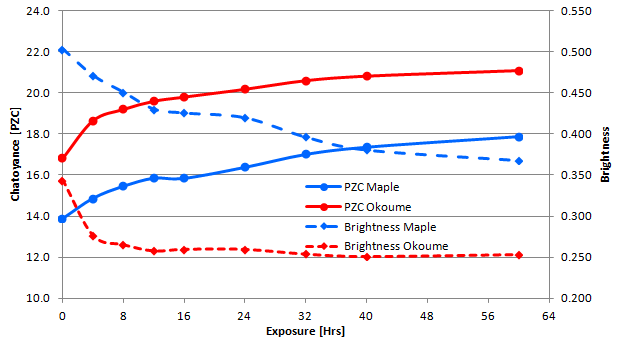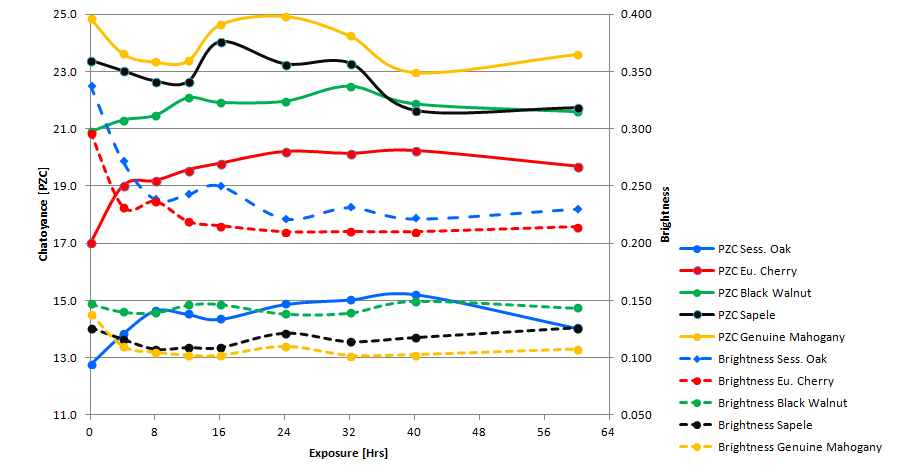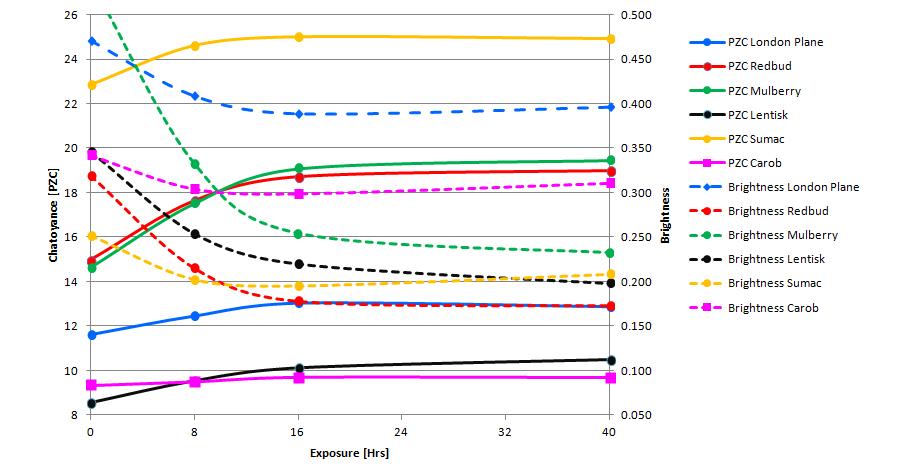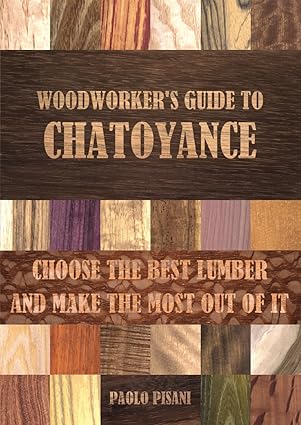Some samples were sanded to 1500-grit and then their chatoyance was measured after exposure to UV light through the use of a tanning lamp. The results are summarized in chart below showing that:
Maple: brightness decreases with exposure time, and visible chatoyance (PZC) increases.
Okoume: brightness decreased, but then reaches some sort of stabilization, while chatoyance keeps increasing.
Oak and Cherry: brightness decreased, while chatoyance reached a peak and then started decreasing.
Black Walnut: this appears quite stable in terms of brightness, but its color visibly changes.
Sapele shows no significant effect on brightness, and again chatoyance reached a peak and then started decreasing.
Genuine Mahogany appears similar to Sapele, but it shows some brightness reduction.
Carob becomes darker in its reddish areas, but there is no significant change in chatoyance.
Redbud and Mulberry become darker with a high chatoyance increase.
London Plane, Sumac and Lentisk also become darker, with a small increase in chatoyance.
Brightness on the right vertical axis is shown as a fraction of white photographic paper brightness.



GIFs below show hot the samples appeared at various stages:
































Want to know more? Get Woodworker’s Guide to Chatoyance!

Available on Amazon in 12 countries – just click on your flag below…
… and enjoy the read!











